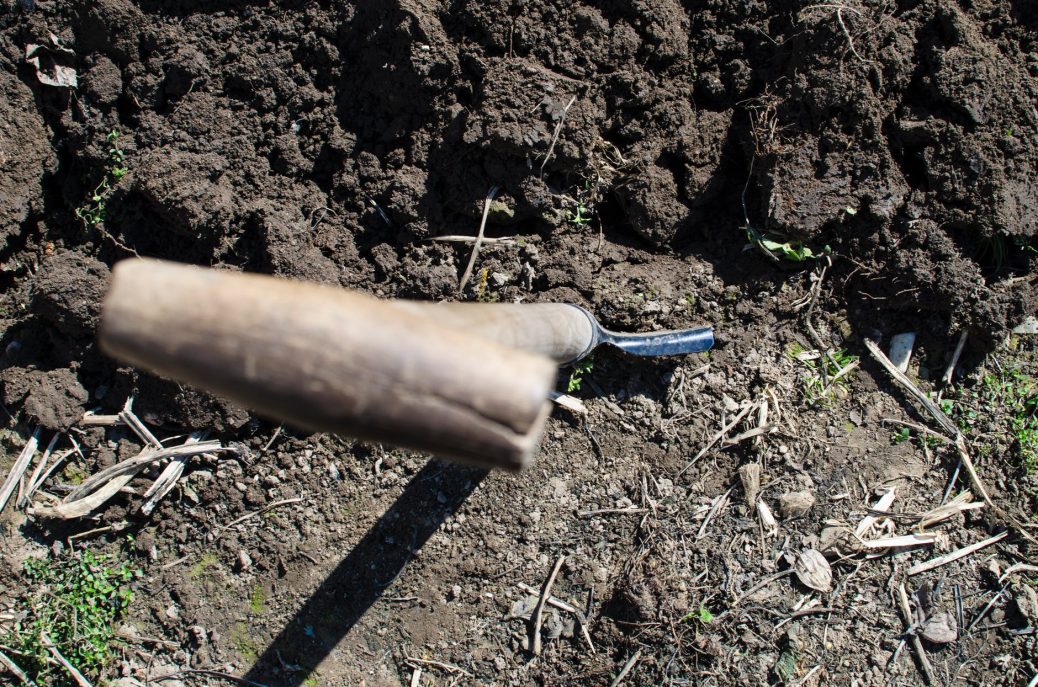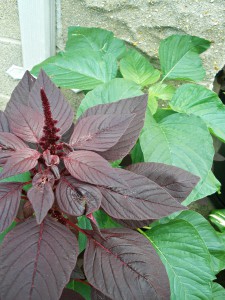By Ansel Oommen
Looking for a multipurpose herb to add to your garden? Amaranth has much to offer in terms of edible and ornamental versatility. Amaranth, also known as pigweed, is a genus of herbaceous annuals with a cosmopolitan distribution. They are drought-hardy, vigorous growers boasting a spectrum of hues that intensify in warm weather, from bright citrine to deep burgundy.
Red and green amaranth
Most amaranth species can grow to seven or eight feet in height with sunflower-like stems and leaves. However, if this is an issue for you, shorter compact varieties such as ‘Pygmy Torch’ exist. Mature amaranths are loaded with numerous weeping (Amaranthus caudatus) or erect (Amaranthus hypochondriacus, Amaranthus cruentus) flower plumes. These plumes make for spectacular floral arrangements, providing interesting texture and long-lasting visual appeal. Plants will continue to put up smaller plumes throughout the growing season, which can be routinely harvested. In addition, the flowers and leaves have historically been used by Hopi Natives to make intense dyes.
All parts of the amaranth are edible, including roots, stems, leaves, and seeds. The leaves can be cooked much the same way as spinach or kale and are similar in taste, with younger leaves being milder in flavor. Cooked leaves are an excellent source of protein, Vitamins A, C, K, B6, and a host of various minerals, including calcium and magnesium. Young stems can be prepared just like asparagus, providing a crisp crunch to salads and soups. Traditionally, the diced stems are stir-fried along with the leaves in Asian cultures. Culinary uses of the root are less common, but for practical purposes are treated like other underground vegetables.
Amaranth seeds have long been used as a grain, most notably by the Aztecs, Incans, and Mayans. Rich in protein and gluten-free, they contain the essential amino acid lysine, which is limited in rice, corn, and wheat. Seeds can be popped like popcorn and coated with sweet or savory seasonings, or ground into flour for use in breads, cereals, pasta, cookies, and other baked goods. The possibilities are truly endless.
To grow amaranth, sow the fine seeds a half an inch deep, spaced four to six inches apart in a firm, moist soil bed. Seeds will germinate within three to four days with soil temperatures of 20°C (68°F). Amaranths can adapt to a variety of soils as long as they are not too acidic or alkaline. Young seedlings will need frequent watering and care. However, once established, amaranths are resistant to heat, drought, and disease and will continue re-seeding themselves for many memorable seasons to come.


